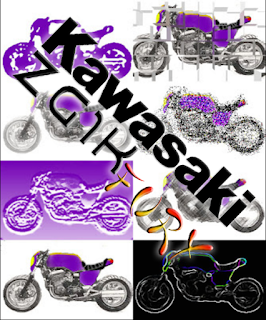I’ve spent almost 20 years in public school classrooms fighting for better student learning outcomes, often while facing bureaucracy that pushes back in order to retain a status quo that supports their privilege. I don’t have an office hang on to, my classroom is my office and my interests have always aligned with making that learning environment as effective as I can make it.
The pandemic has cast a harsh light on this lack of focus on pedagogy in our education system. This past year could have been a huge step forward for Ontario education in terms of leveraging technology to produce better learning outcomes, but instead of a Bill Davis style, rational, progressive conservative clean up of an education system steeped in almost two decades of liberal ‘vision’, we got the Ford circus. Ontario really deserves better politicians than it gets.
In my time in Ontario classrooms I’ve seen #edtech evolve at a fantastic rate and I’ve always kept up with it. #Onted is a traditionalist organization with many stake holders (unions, boards, ministries, colleges and many other hangers-on too numerous to mention) who are more interested in playing politics in order to justify their role in an increasingly bloated and outdated system. The pandemic has made it clear to me that most of these groups are focused on doing whatever it takes to keep their office jobs no matter how cruel or harmful to students the plan is. My union just sent me another email about how we need to start another political fight over EQAO. That this arrives in a year of historic workplace abuse in the system shows just how tone deaf my union has become. No one seems to be focused on what matters anymore (student learning outcomes, remember?).
Dr Sasha Noukhovitch, a fellow CyberTitan coach and colleague, shared an interesting while paper from The Canadian Commission for UNESCO on how artificial intelligence can revolutionize education. This nuanced look at how AI could provide differentiation and support for all students regardless of their socio-economic situation (assuming we ever make a serious effort to permanently close the digital divide) represents a better understanding of the technology than that shown by the ‘robots will take our jobs!’ crowd and suggests a pathway toward a future where technology works to provide equity rather than what we’re doing with it now.
In a year where everyone likes to talk about equity while doing the exact opposite setting up hugely inequitable pandemic learning schedules, the idea that a an apolitical, rational and student needs focused system could be brought to bear is thrilling. It’s an ongoing frustration that focusing our classrooms on pedagogy feels more and more alien; everyone in Ontario education has lost the plot and left it to exhausted and under-supported classroom teachers to make their inequitable planning work.
Artificial Intelligence offers the kind of individual support specific to student needs that the system has always struggled to provide. I’ve been dreaming about it for ten years. Our low-resolution bureaucracy does an adequate job of managing a mythically average student but doesn’t like to treat students like people because that costs money. AI could do a lot to address that in ability and inequity, but rather than explore this emerging technology you can bet the privileged/political stake holders will do all they can to block it in order to maintain their status quo benefits.
| This is about the UK but the conservative playbook looks the same everywhere. |
The second article from The Guardian about British schools offers some worrying details about how behind the curve they are in terms of technology adoption (lots of schools don’t have wifi yet? C’mon UKed!). It also suggests a way to improve student learning outcomes that has become apparent from asynchronous online learning: “One way to tackle the achievement gap is surely in-school lessons followed by more personalised online learning, either at home or in after-school clubs.” Of course, in Ontario we rush to apply technology to force synchronous learning (recreating the inequities of the classroom) for political ends while further crushing students whose families can’t provide the infrastructure.
Combine the concept of immanent personalized virtual learning AIs that will tirelessly support students right where they need it and the idea that school can happen both in class synchronously and out of class virtually and at the student’s own pace and you have a recipe for a quality of pedagogy that we simply can’t produce in our status-quo, politically charged bureaucracy intent on retaining all the infrastructure (schools, board offices, union offices, educational hangers-on…) and the jobs needed to run it. A leaner burning Ontario education system focused on student learning might have a similar number of people working in it but almost all of them would be actually involved in teaching.
The thought of a rational, politics free AI focused entirely on maximizing learning outcomes has me dreaming of an education system free of messy human politics and the self-serving political organizations that feed off it. Decisions would be data driven, transparent and then held to accountability through more transparent data collection that would be ongoing and everywhere rather than centred in a questionable and expensive organization run by a failed politician.
I’m in my final decade of teaching and I’ve lost faith in my union and doubt the intentions of educational management all the way through the system. The ‘support’ organizations that also feed off the education system seem to have completely lost the plot in the political haze of education in 2021 Ontario. Spending my final years in the system making student supported AI learning tools a reality and watching them burn the status quo to the ground would be a satisfying conclusion to a career spent focused on student learning. I’ve long hoped to leave the system in better shape than I found it. I think the route to that goal is through adapting emerging artificial intelligence and other digital learning tools through a ruthlessly pedagogical focus. If that burns our bloated bureaucracy to the ground in the process then I’ll have achieved my goal of a more equitable and effective public education system that serves student needs first.
from Blogger https://ift.tt/3qLlb9i
via IFTTT












-MOTION.gif)










